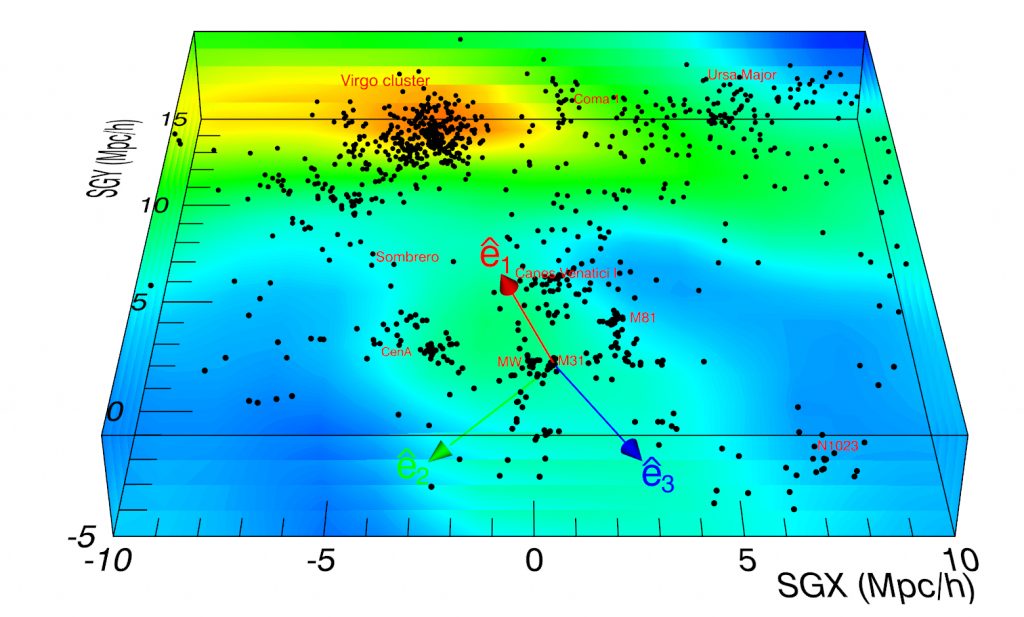The neighborhood in the immediate cosmological vicinity of the Milky Way is known as the “Near-Field”. Its main galaxies are the Milky Way-Andromeda pair, accompanied by an entourage of smaller galaxies including the Large Magellanic Cloud, the Triangulum galaxy (M33) and a flock of low luminosity dwarfs. Beyond ~3 Mpc, there are a few similarly sized large galaxies (e.g Centaurus A, M83, M81, etc). At around 15Mpc, the Virgo galaxy cluster dominates the scene. A dark matter filament detected by the coherent motion of galaxies stretches from us to Virgo. The entire structure described above is confined to the super-galactic plane, which is itself abutted by the Local Void (Figure 1). On even larger scales, the Virgo cluster and the entire local volume forms part of the local super cluster, Laniakea, which is itself embedded in the “Cosmic Web”. Our near field is the best-observed region of the universe. As such it is the most interesting to study, to understand and to try and simulate.

Figure 1: The Local Universe is shown here as a section of the super galactic plane. Both the density (color contours) and the corresponding velocity field (flow lines) are Wiener Filter reconstructions obtained from the CosmicFlow-2 radial peculiar velocity catalogue. The Wiener Filter does a remarkably good job at recovering the relevant features in the local neighborhood. The Local Void sits above this slab. Figure from Libeskind et al 2015.
Over the coming years, a number of large observatories will come online, increasing even more the motivation to study the local universe. GAIA and EUCLID are just two such projects that motivate the need for high resolution simulations of the cosmic near field. In addition to that, during the last decades the field of astronomy and astrophysics has transformed dramatically due to a combination of several surprising observational discoveries (such as a chemically identifiable thin and thick disc in the Milky Way, as well as an improved census of dwarf galaxies, some of the most dark matter dominated objects in the universe) and technological advances (such as the rise of massively paralleled supercomputers able to run complex numerical simulations at high resolution). Accordingly, the field has converged onto a ”cosmological paradigm” that describes the growth of structure in the universe. Both European and American planners have honed in on similar questions[1] regarding this cosmological model, including one of the most fundamental, “how do galaxies form and evolve?” The present proposal deals with these questions from an anthropocentric perspective: of the billions of galaxies in the universe, we seek to understand how our home galaxy, the Milky Way, emerged out of the primordial soup. In particular, we focus on the formation and evolution of the (stellar, gaseous and magnetic) distribution of the Local Group, along with the local satellite galaxy population.
[1] http://science1.nasa.gov/astrophysics/big-questions/ and